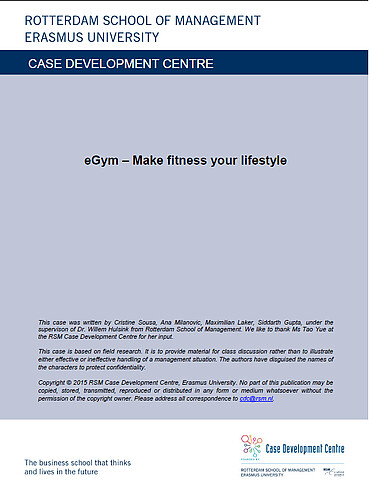description
After the German fitness technology company eGym had its initial success, it launched a state-of-the-art new product that met with disappointing sales. How should eGym deal with a new product whose development has eaten up much of its capital?
Citation Note
Based on field research; 16 pages.
Follow the 'handle' link to access the Case Study on RePub.
For EUR staff members: the Teaching Note is available on request, you can contact us at rsm.nl/cdc/contact/
For external users: follow the link to purchase the Case Study and the Teaching Note.
Objective
By the end of the class, students should be able to: 1. Evaluate the pros and cons of giving up a developed product and treating it as a sunk cost as compared to holding on to it. 2. Comprehend how a company should expand its product portfolio. 4. Recognize that innovation projects are characterized by uncertainties, such as market and technical uncertainties; Innovative products may not respond to every customer’s needs, and customer segmentation is often necessary. 5. Analyze the difference between adapting an unsuccessful product as per customers’ needs and educating the customer of the benefits of the products to make it successful. 6. Differentiate between Lean and agile techniques of production.
Abstract
By 2013, eGym as a B2B business had already grown a considerable size, receiving seed funding to successfully introduce a hardware and software fitness product into the German market. The hardware product was a circuit of high-tech fitness-machines, which increased workout quality and effectiveness. The software product enabled trainers to deliver individualized customer service.
After having focused initially on Germany, Philipp was eager to expand internationally and was seeking to secure additional funding. The product Gym Premium would make use of the eGym fitness-machines and activate additional training methods, as well as personalized workout programs as a subscription on an individual basis. Philipp and his sales force ensured a rapid development of the product and a quick launch, but sales were disappointing. Consequently, Philipp brought in Arthur whose task was to turn eGym Premium into a successful business. Arthur was confronted with a fully functional, completely developed product that employed state-of-the-art scientific findings ensuring the most effective training. What should Arthur do? Should Premium be adapted to match the current customers’ needs? How could Arthur ensure long-term success of this product and turn it into a business unit matching Philipp’s aspirations?
